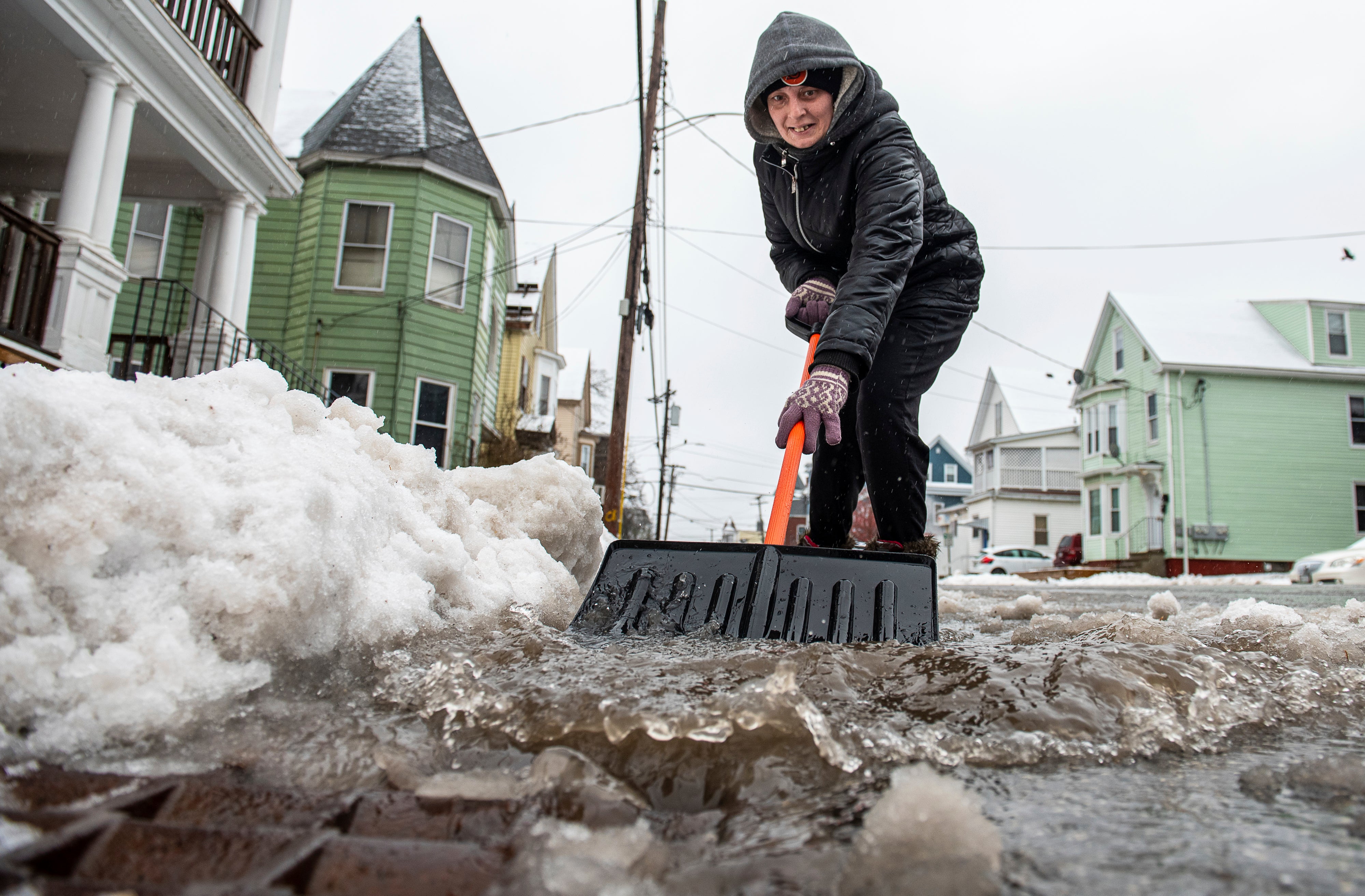Spring brings snow to several northern states after mild winter canceled ski trips, winter festivals
After a season with very little snow, a blast of snowy weather could dump a foot or more in some northern states, just as spring officially arrives

After a season with very little snow, a blast of snowy weather could dump a foot or more in some northern states, just as spring officially arrives.
Parts of Montana, the Dakotas, Minnesota, Illinois and Wisconsin are under winter weather advisories, with snow expected to start falling Thursday in some areas. Minnesota could see a foot of snow over the weekend, and parts of New England could also see 12 to 18 inches (30 to 45 centimeters) in the coming days.
“It seems like it is supposed to be in like a lion and out like a lamb,” said Brian Hurley, a senior meteorologist with the National Weather Service’s Weather Prediction Center. “Now it just seems like it was flipped for a lot of these areas: In like a lamb and out like a lion.”
The spring follows a wild winter, with record heat in February allowing for golf in Wisconsin and outdoor food trucks in Minnesota.
The weather has been so unseasonably warm that many tulips in Pella, Iowa, bloomed in advance of the city’s famed Tulip Time Festival in early May. Organizers plan to use hundreds of wooden tulips to supplement the blooms.
The Minnesota Ice Festival, which was supposed to include an ice carving competition, ice-skating rink and a record-setting 18,000 square foot (1,670 square meter) ice maze, had to be canceled.
“I barely even put on a jacket,” said Minnesota Ice CEO Robbie Harrell, who canceled the event. “Born and raised here in Minnesota. I personally cannot ever remember such a brown winter. It is almost sad."
Now that his trees are budding with spring blooms, snow is coming.
“Let’s get that curveball in there,” he lamented. “We will get a little taste of winter."
In Montana, business was down by 30% early in the season at the Whitefish Mountain Resort, said spokesman Chad Sokol. Conditions later improved, but some of the resorts at lower altitudes had mid-season closures.
“It was definitely a logistical challenge," Sokol said, adding that as the season comes to an end, the business shifts from out-of-town visitors to local season pass holders.
“I am sure," he said, “they will be coming in droves to catch this last storm.”
A mishmash of systems get the credit — or the blame, depending on who you ask — for this spring snowstorm.
The National Weather Service said a potent storm system rapidly strengthening over eastern Maine is already producing heavy snow. Forecasters are predicating that by Saturday, parts of Maine, as well as Vermont and New Hampshire, will be coated with at least 8 inches (20 centimeters) of snow.
Meanwhile, another system has already started spreading light to moderate snow from northeast Montana to the Dakotas, and is expected to expand into the Upper Midwest and Great Lakes by Friday. Another system will arrive on its heels, entering from the West Coast on Friday and spreading precipitation inland.
Additional heavy snow will continue into early next week across much of the northern Plains, the National Weather Service said.
In Wisconsin, where record-setting warmth in February contributed to the first tornadoes the state has ever seen in that month, forecasts called for anywhere from 1 to 3 inches (2.5 to 7.6 centimeters) across southern parts of the state by Friday afternoon.
Madison, the state capital, braced for up to 5 inches (12.7 cm) and Milwaukee was set to get up to 6 inches (15.2 cm). Up to 5 inches (12.7 cm) was expected to fall on Lake Geneva, where organizers were forced to cut the city’s annual winter ice festival short due to February’s warm temperatures.
Grand Rapids, Michigan, expected to receive around 4 inches (10.2 cm). The storm was expected to just clip the Chicago area, with forecasts calling for rain and snow but little accumulation.
Temperatures won't be particularly cold, mostly in the 20s and 30s, said Hurley, of the Weather Prediction Center.
“Some of these areas are going to see maybe their heaviest snow of the season, if you call it a new season,” he said. “We will call it the cool season.”
___
Hollingsworth reported from Kansas City, Missouri.
Bookmark popover
Removed from bookmarks